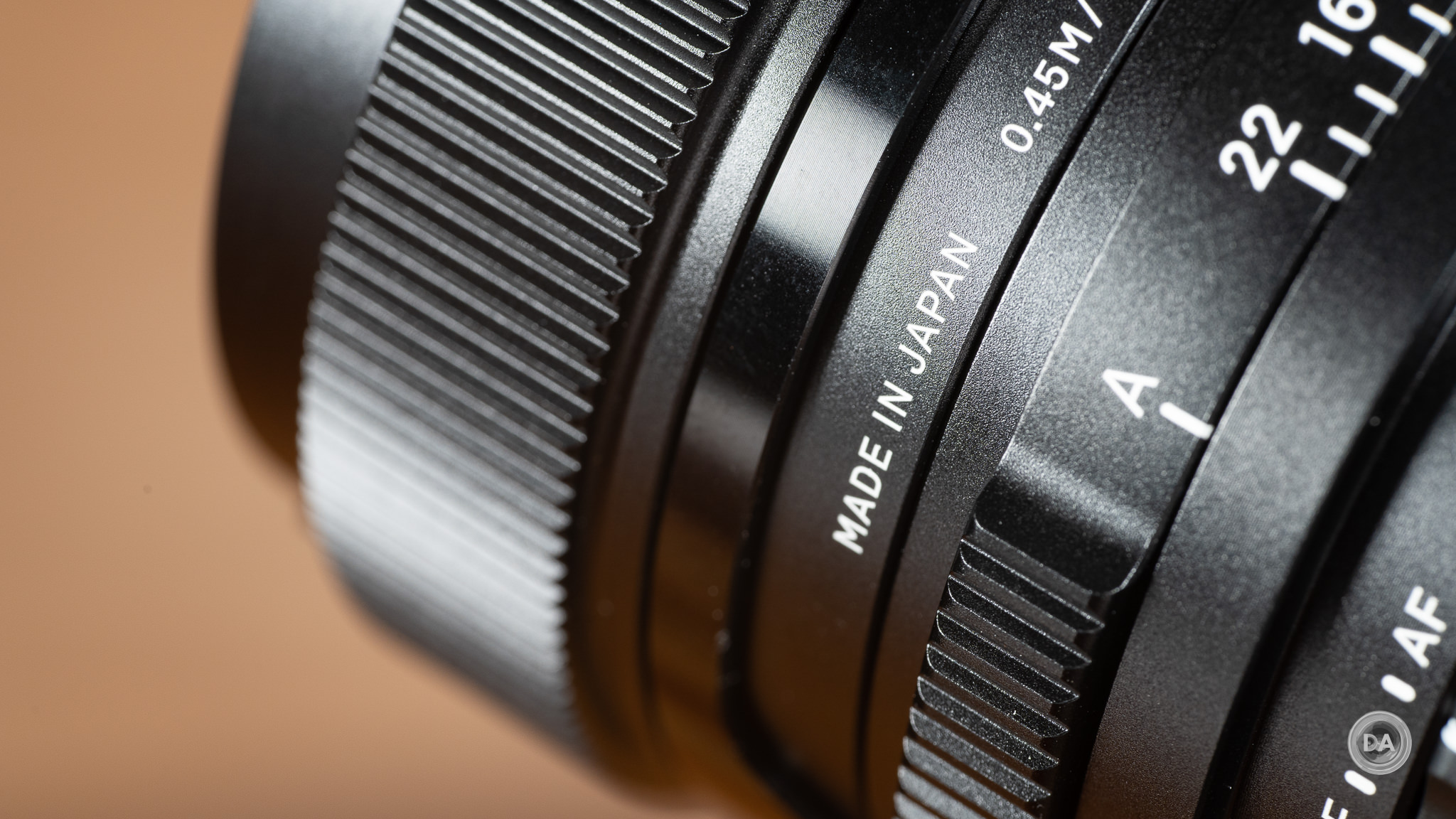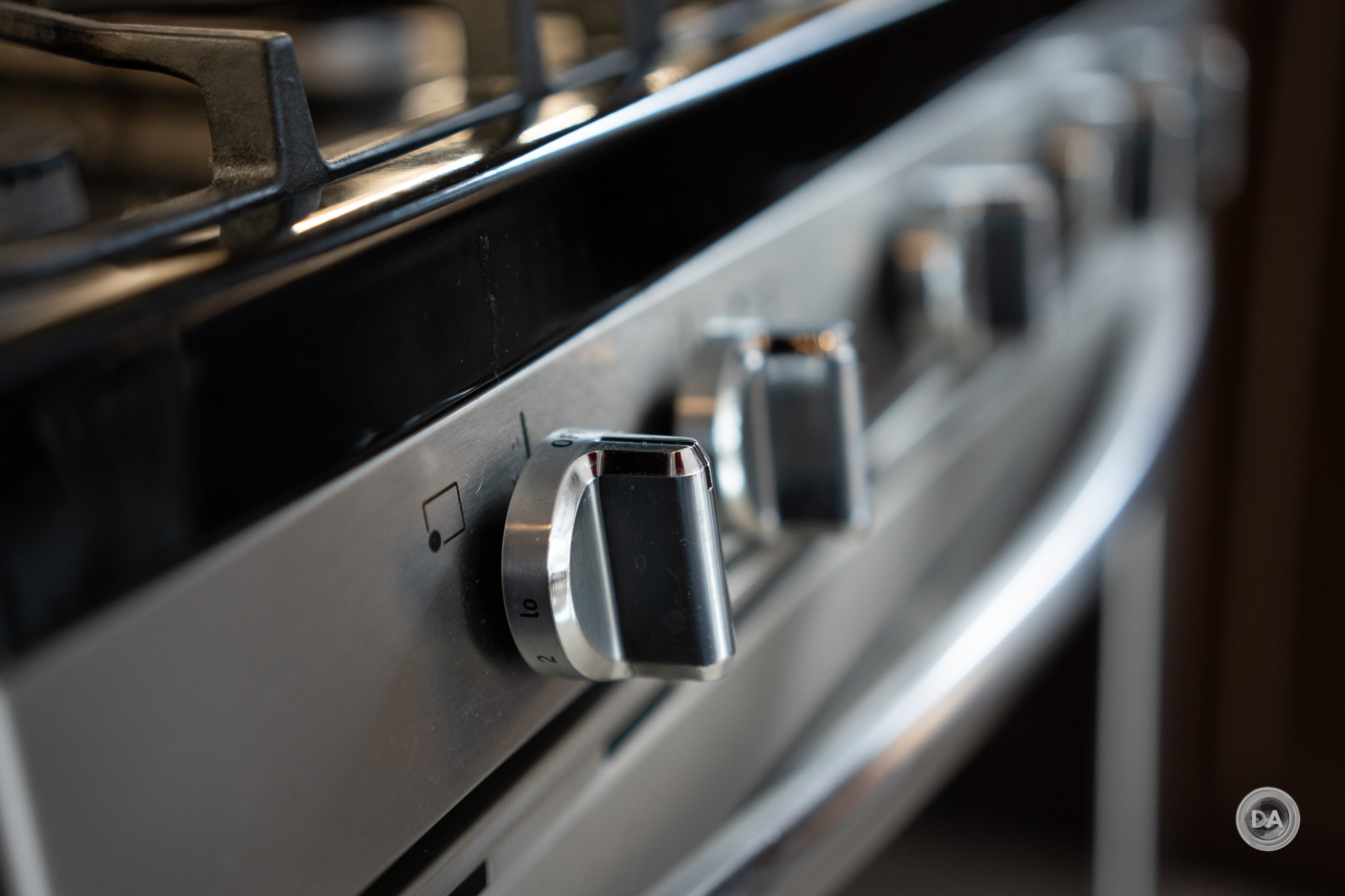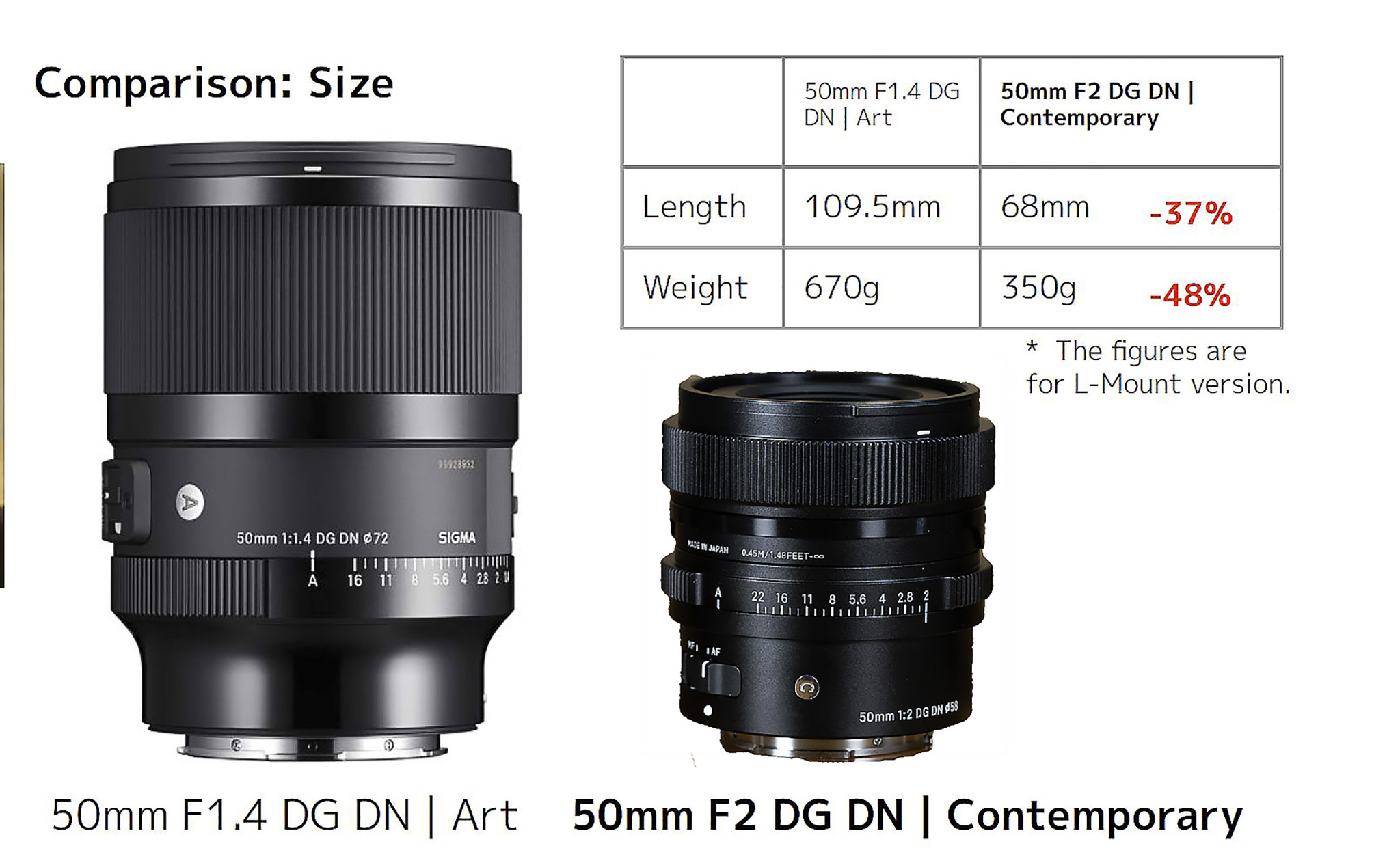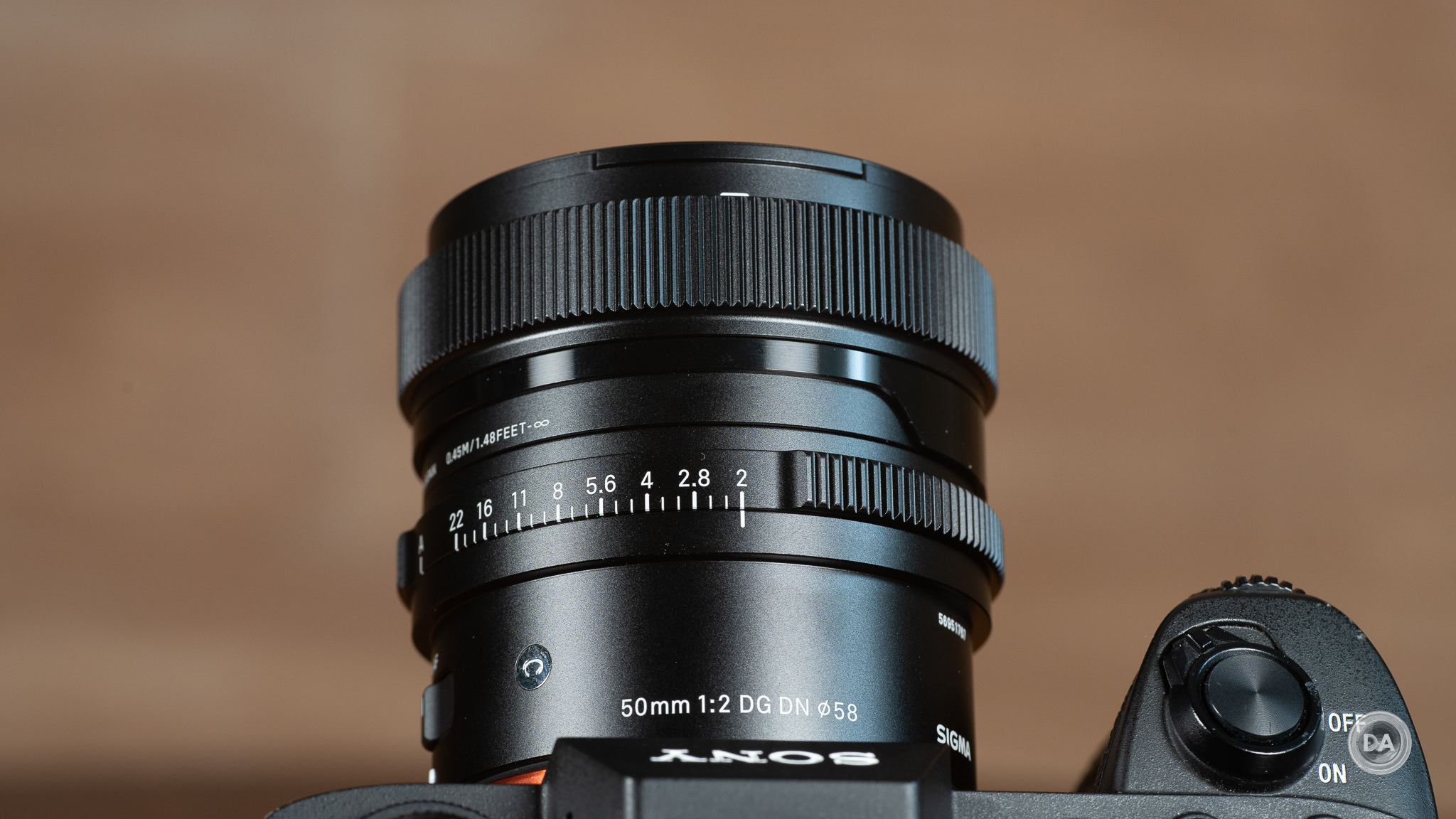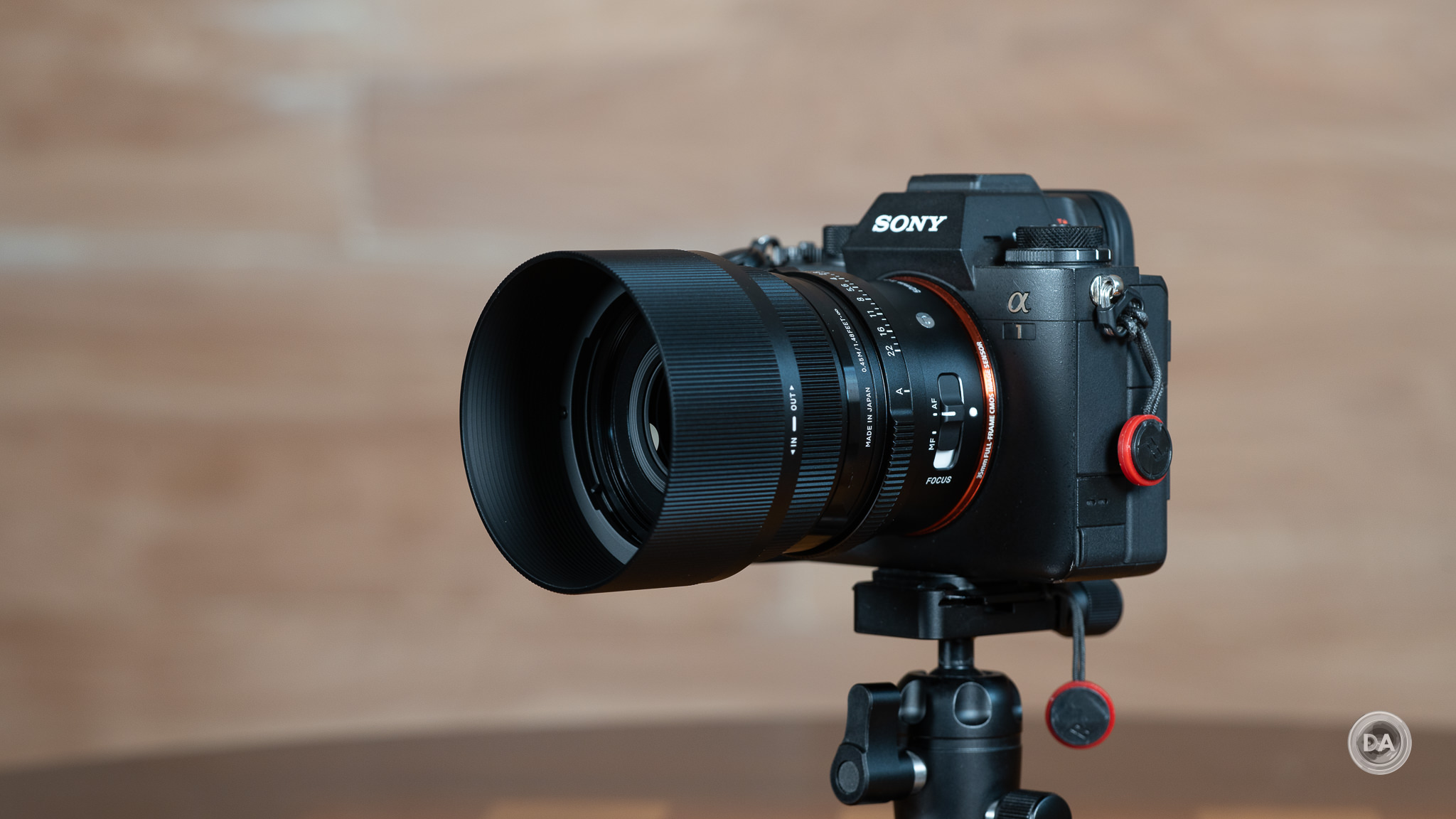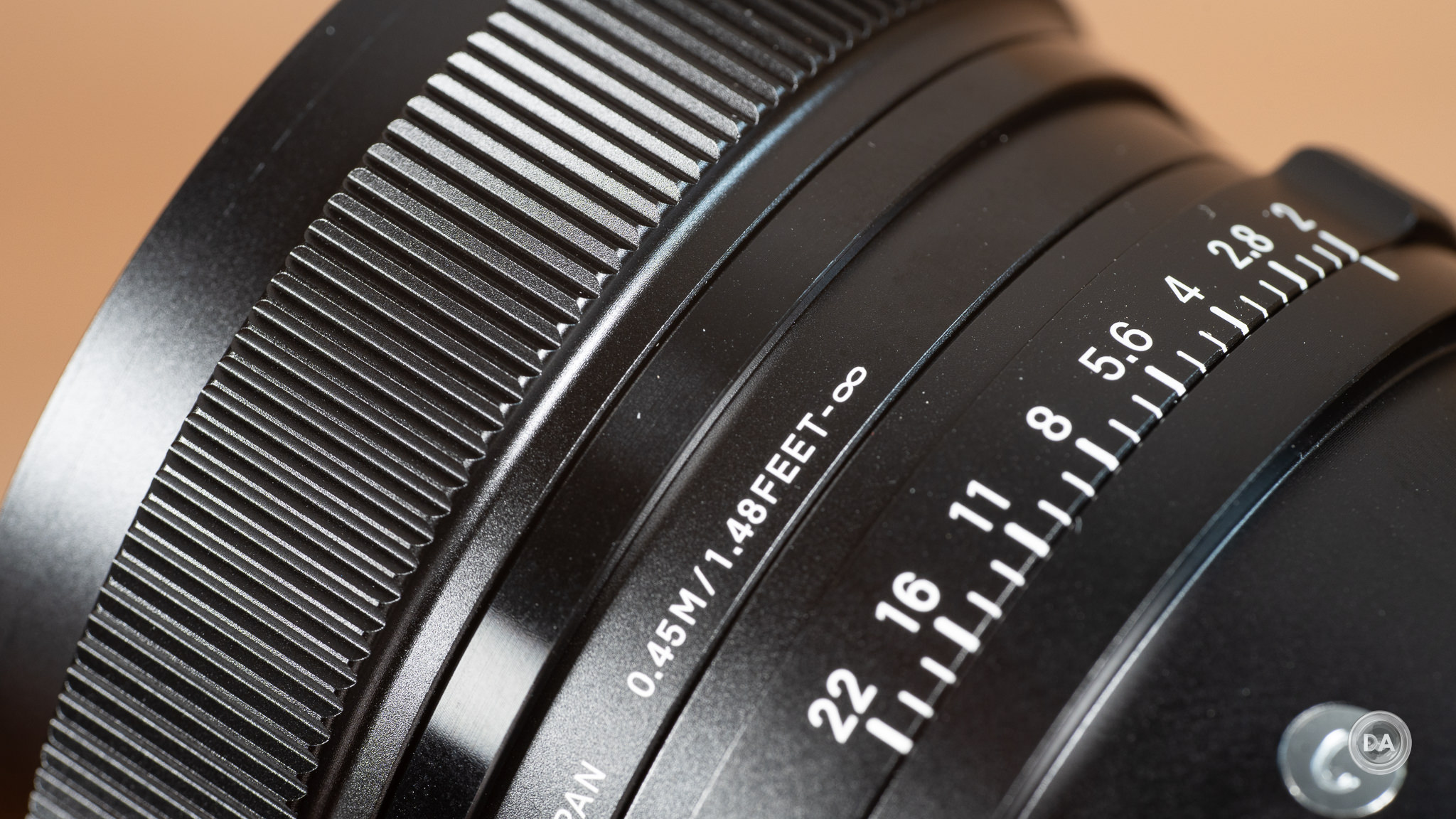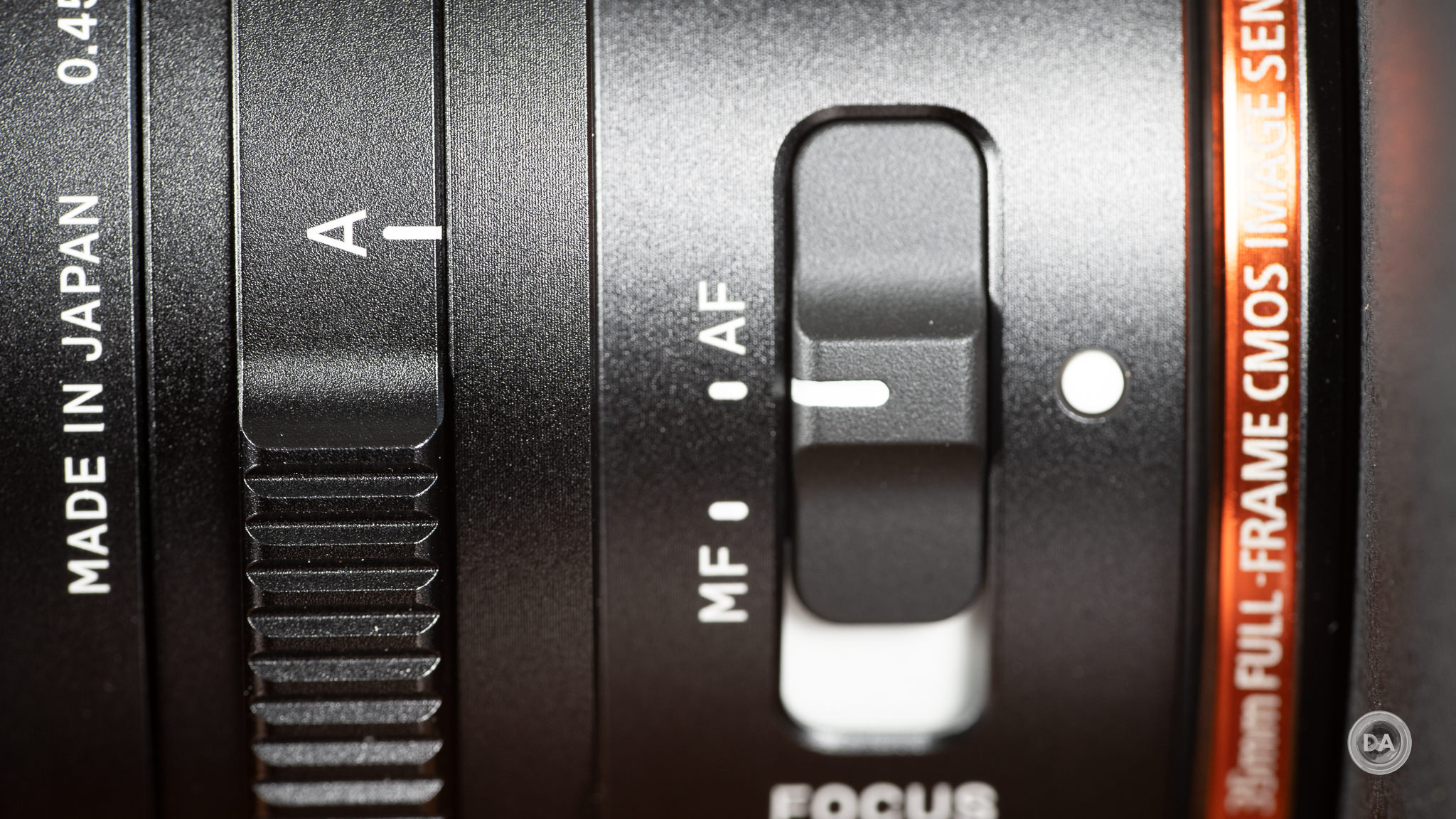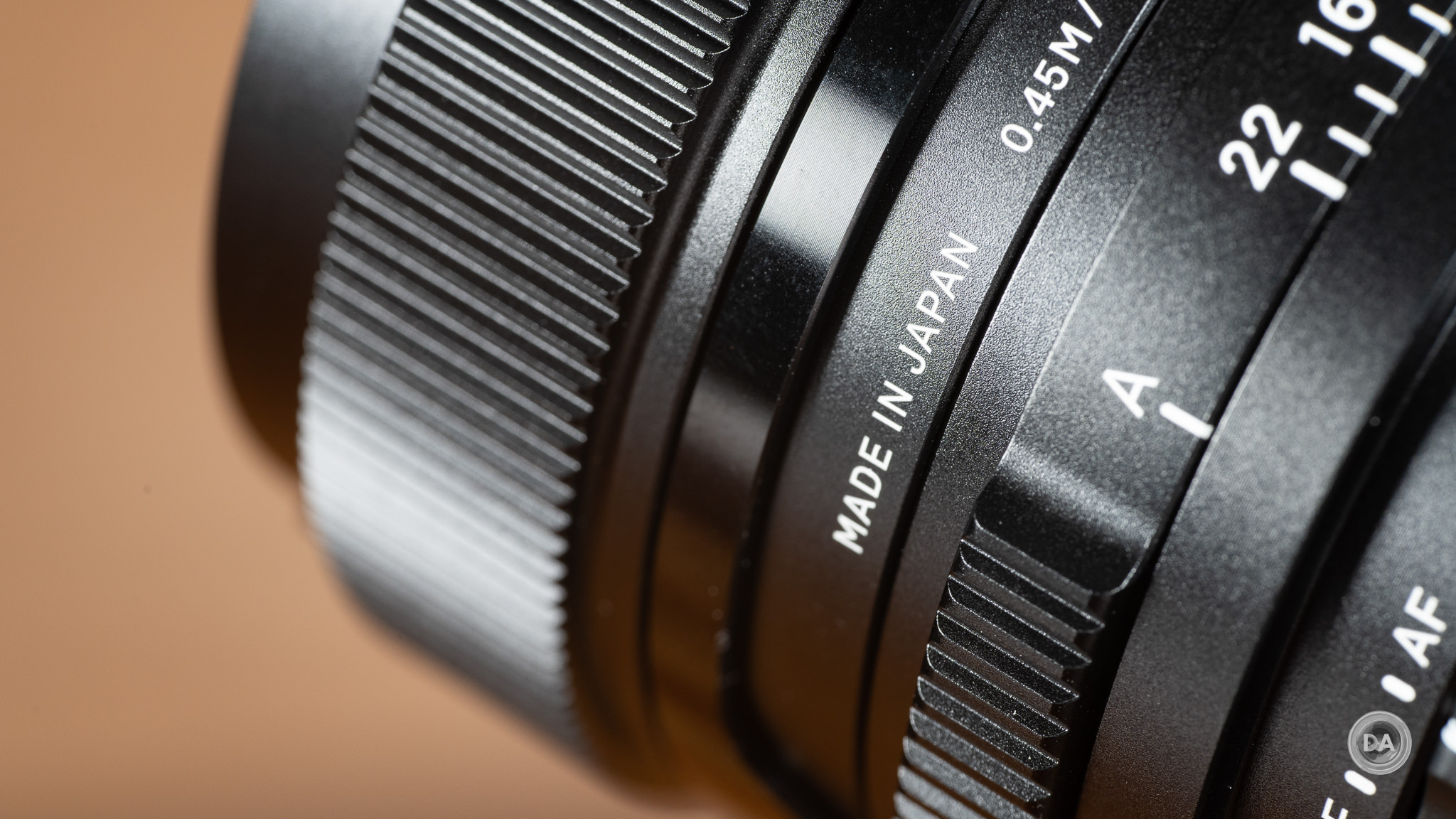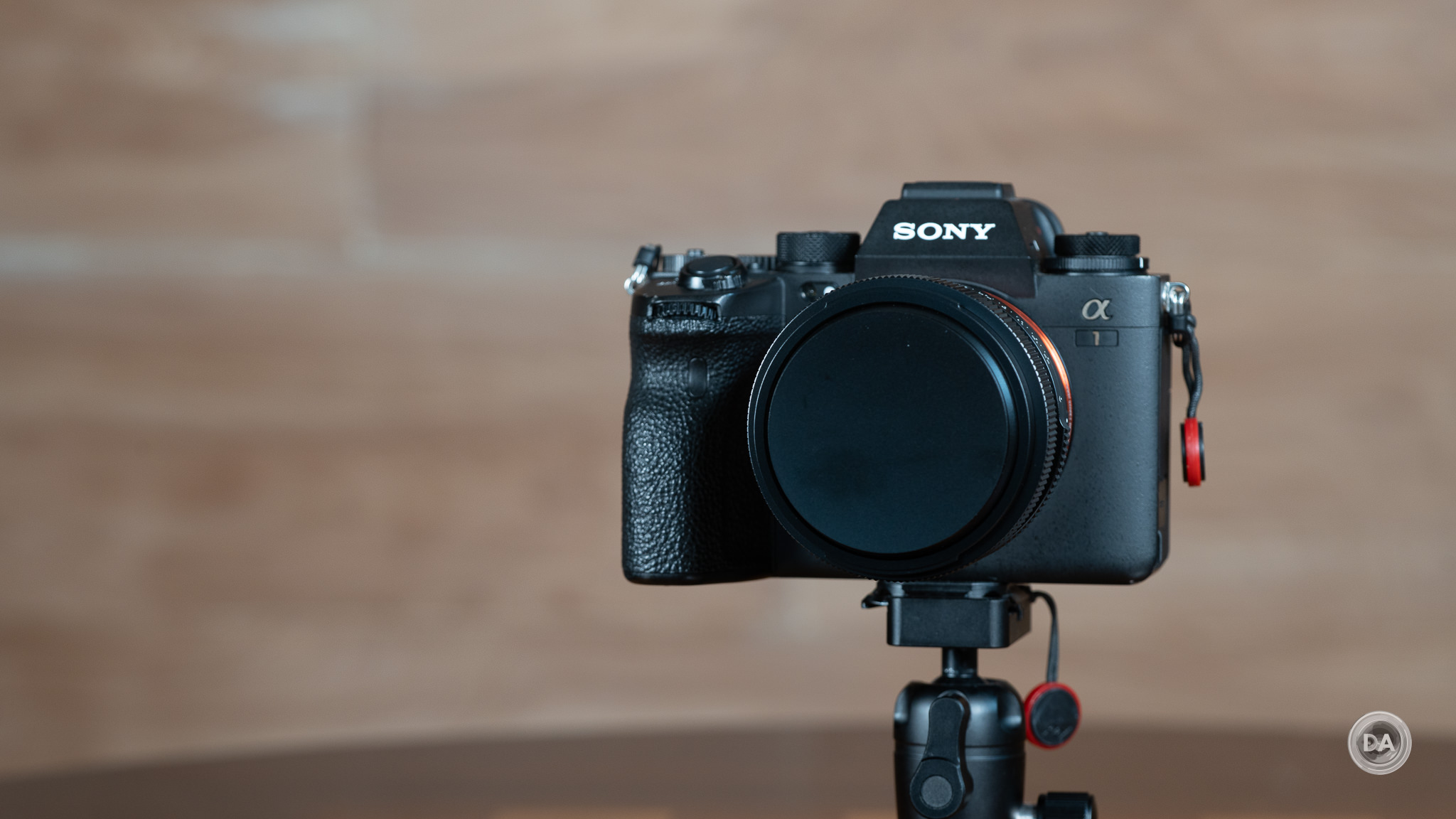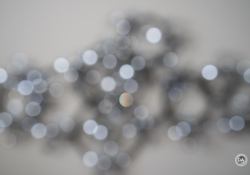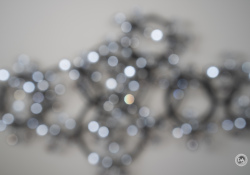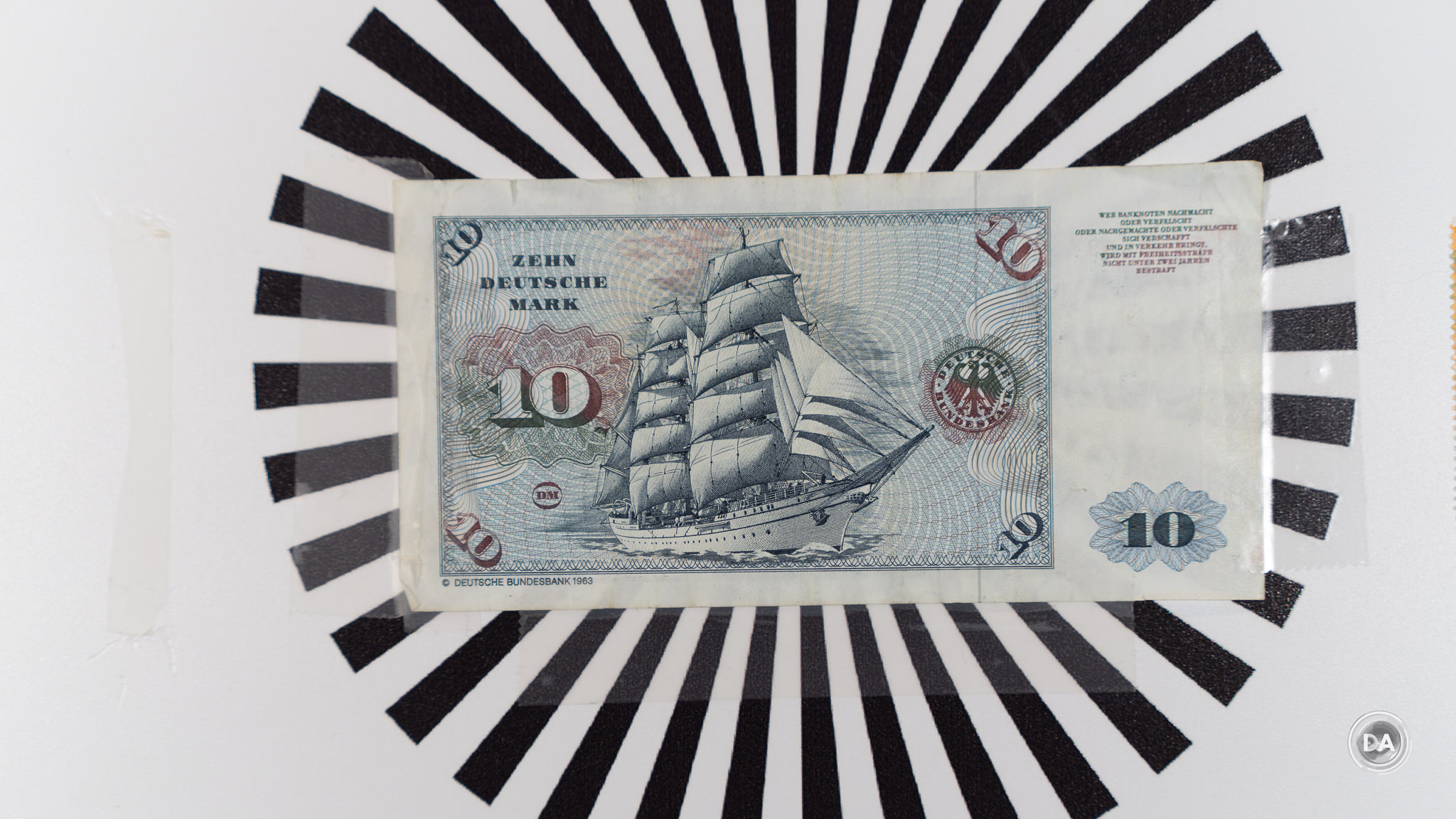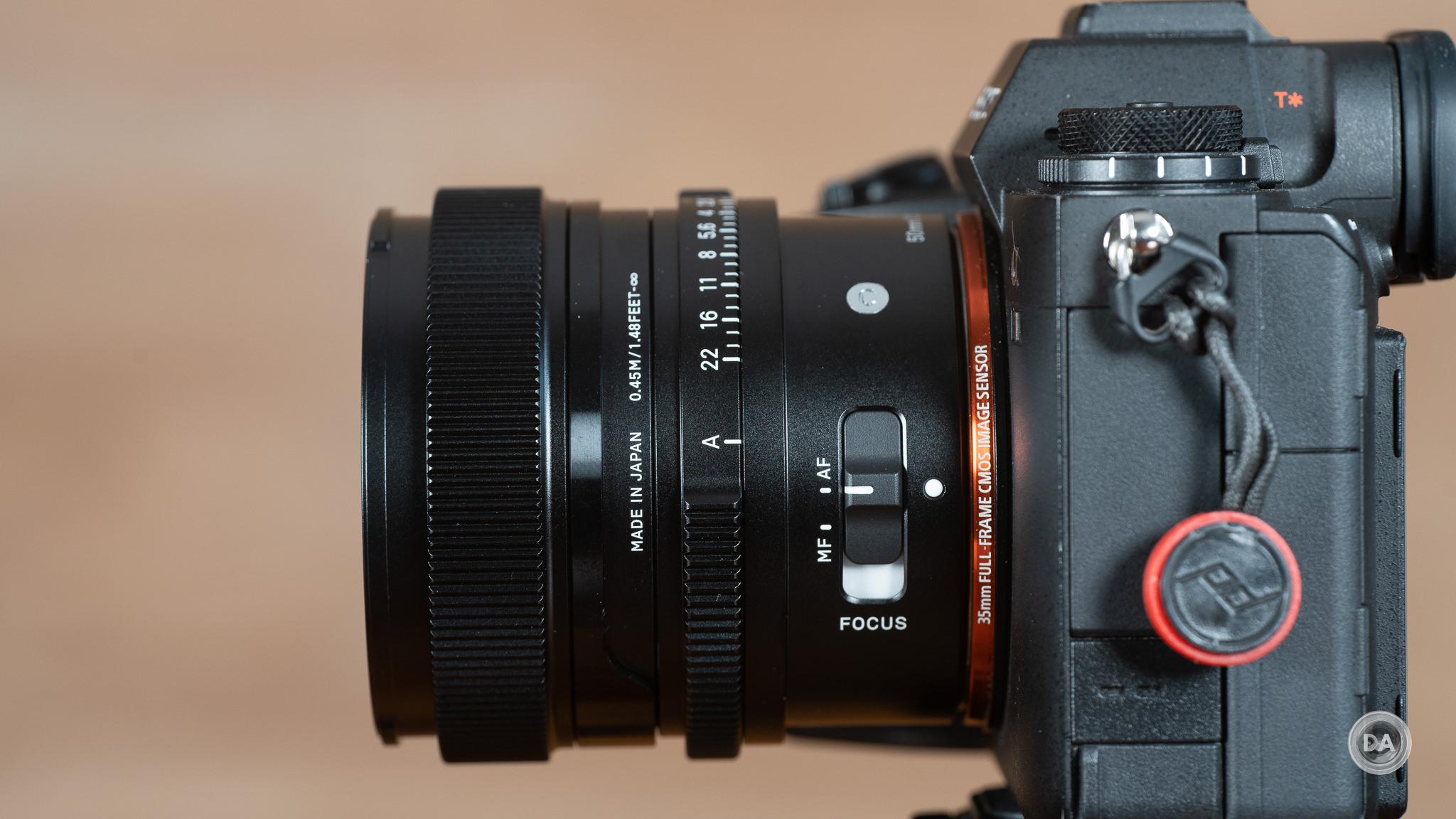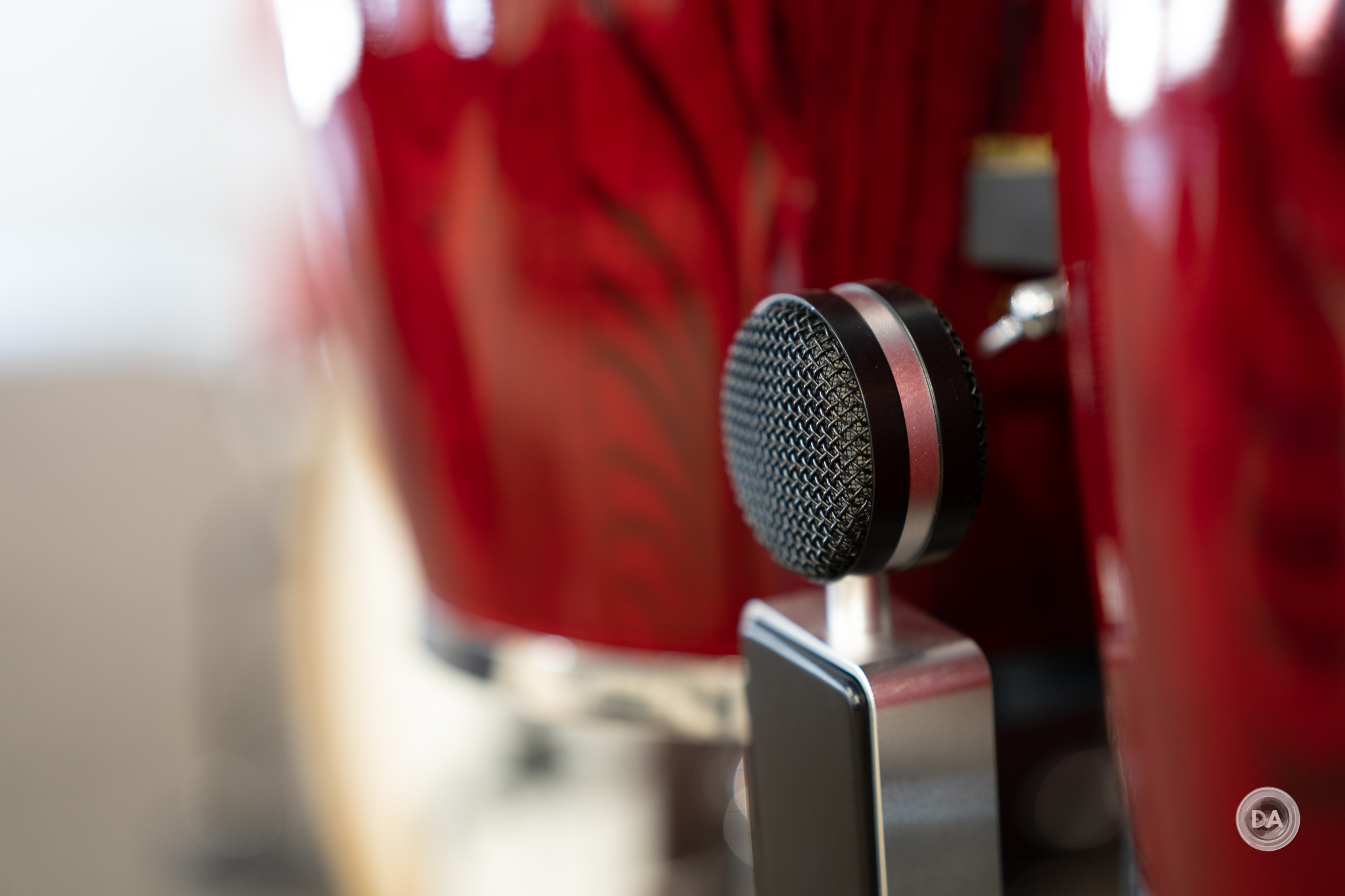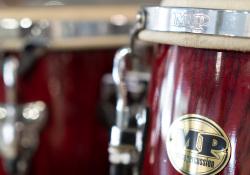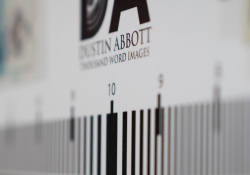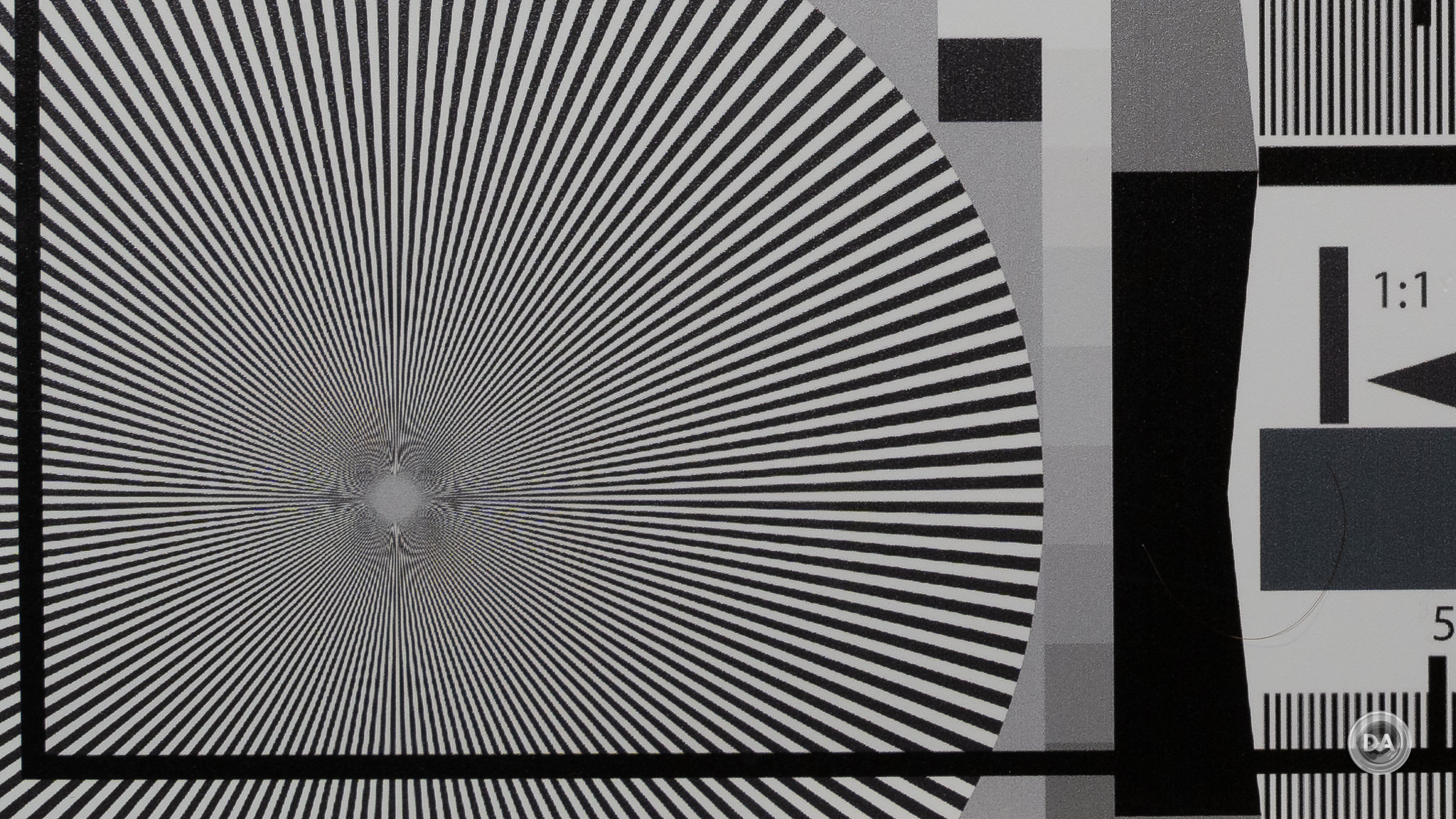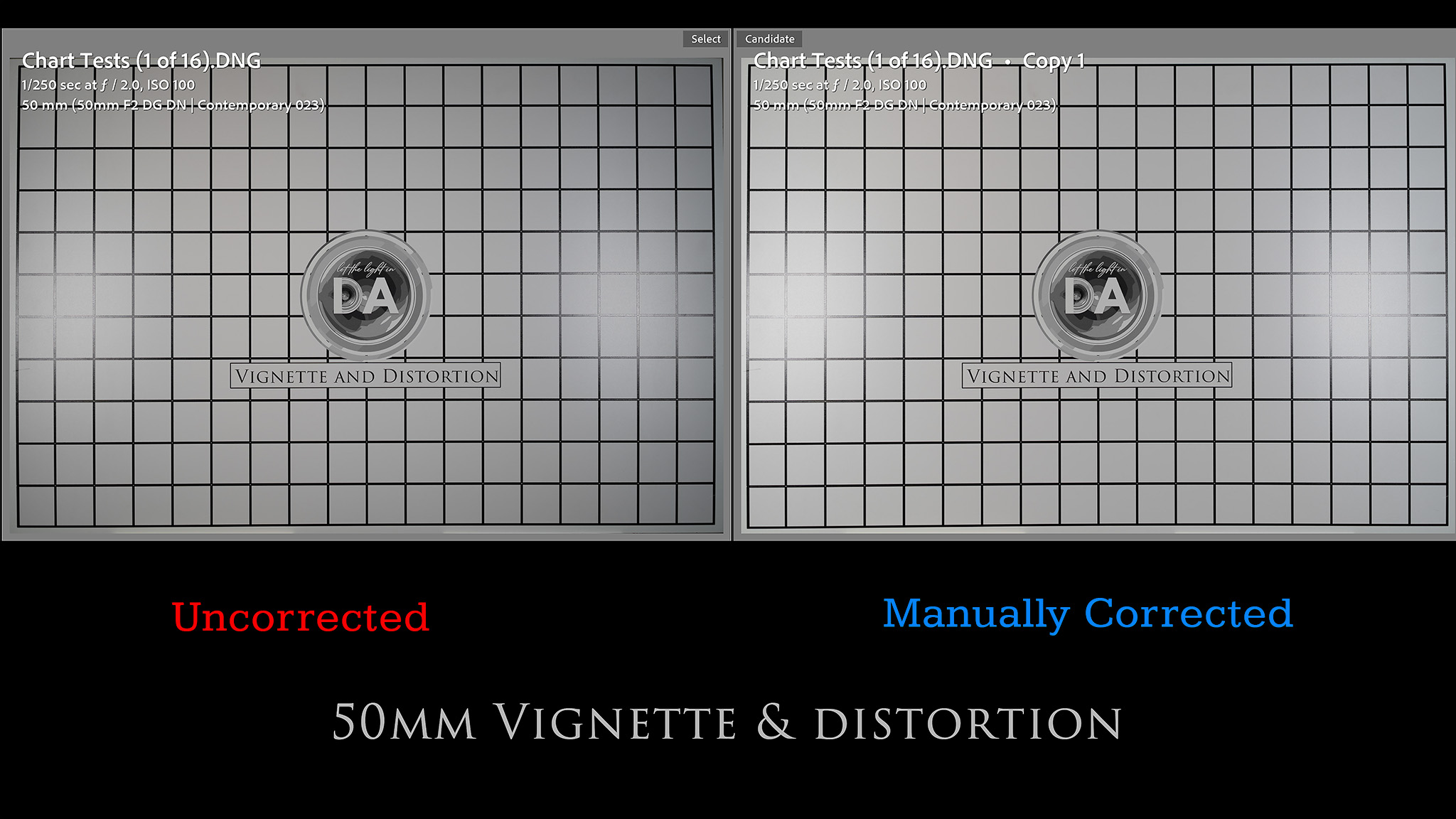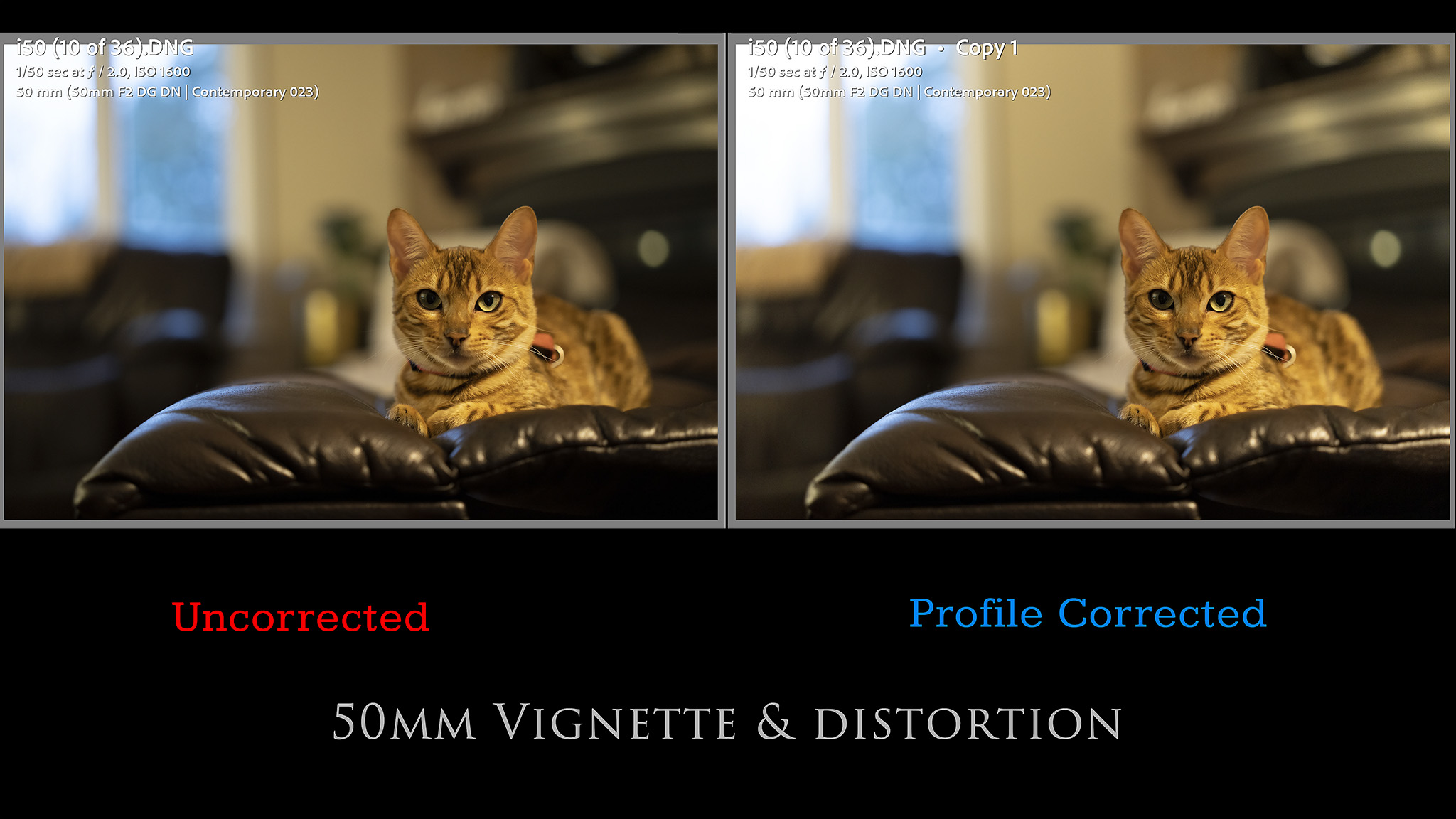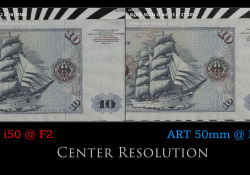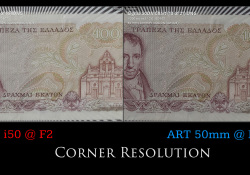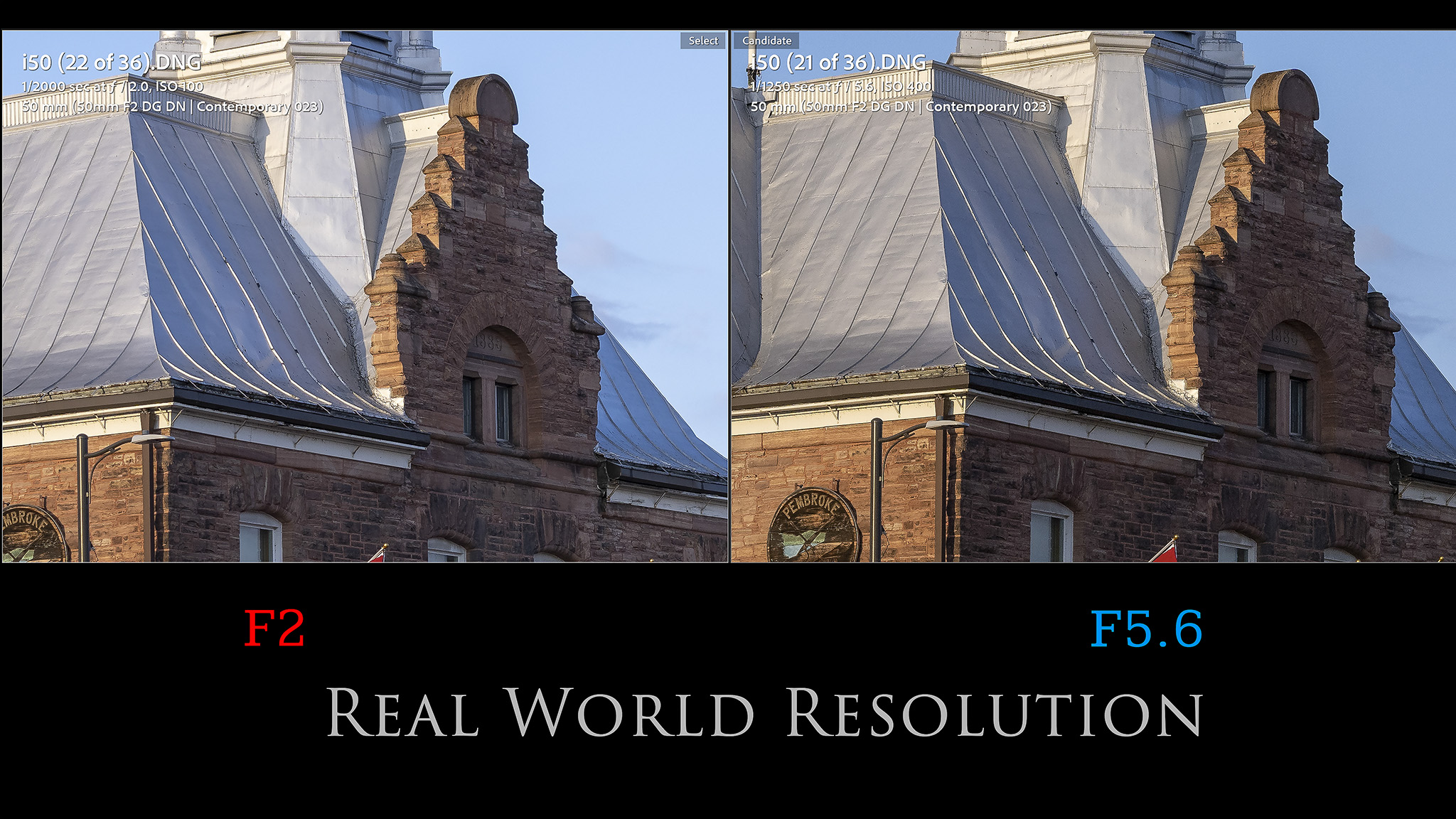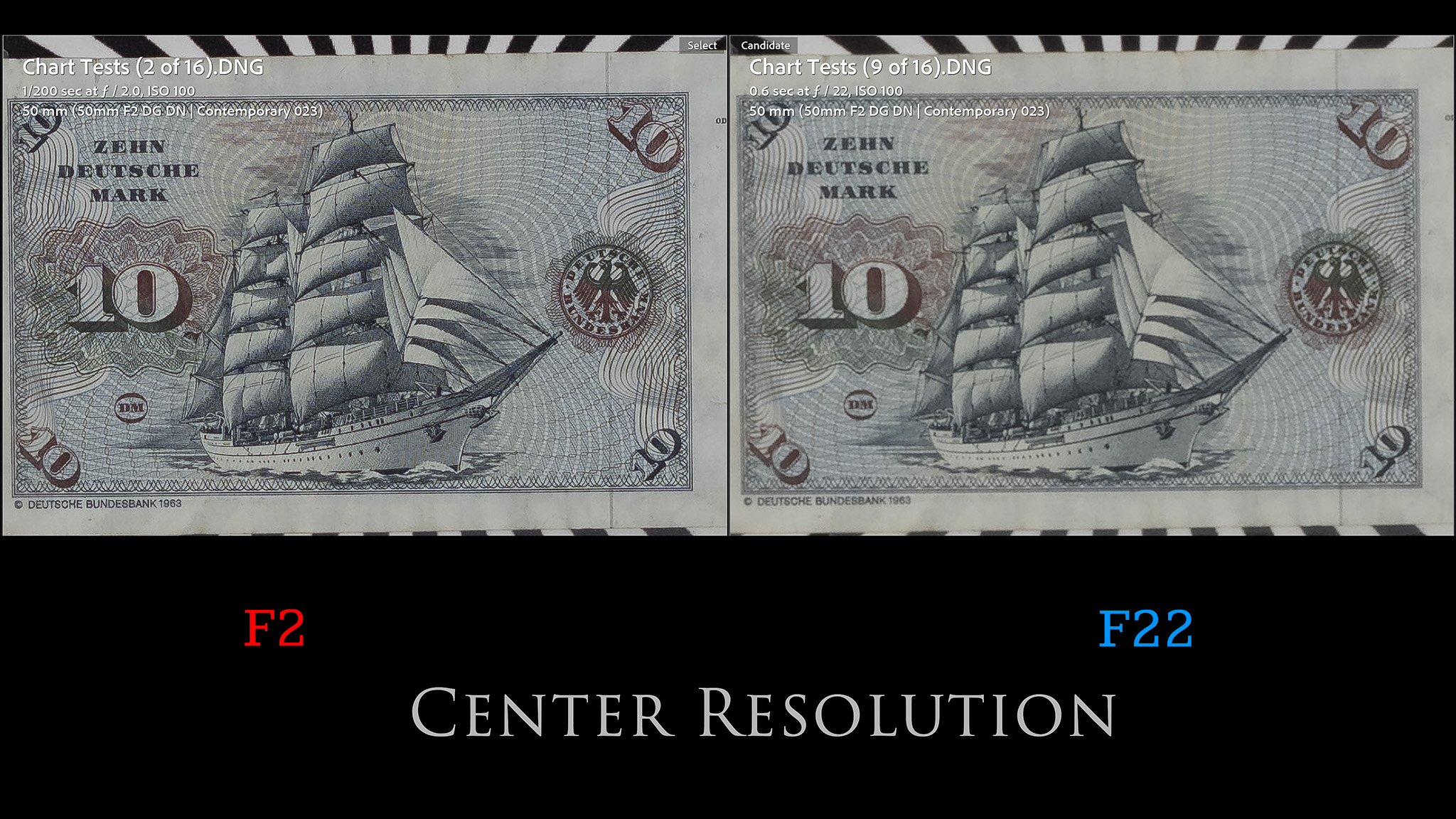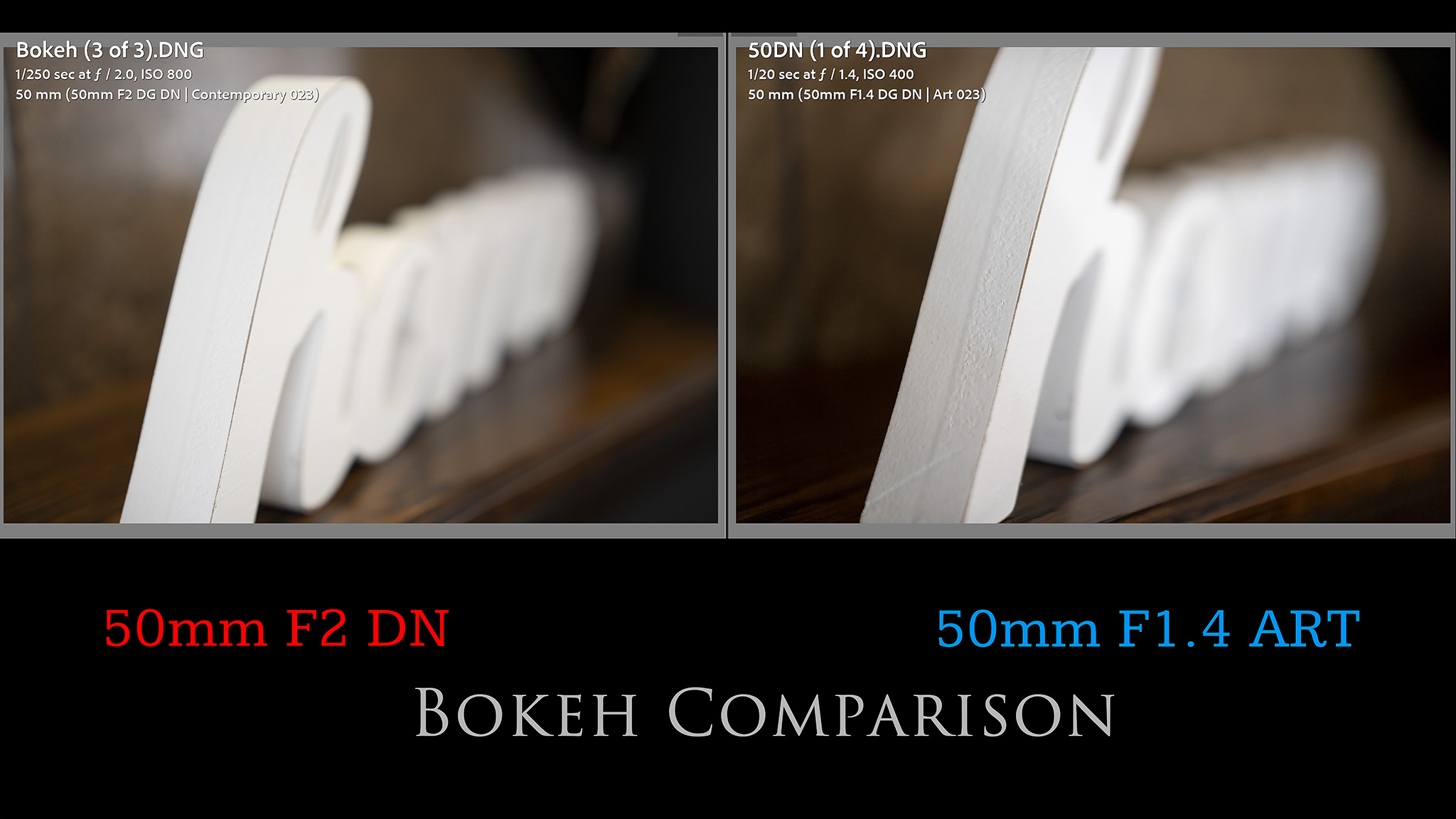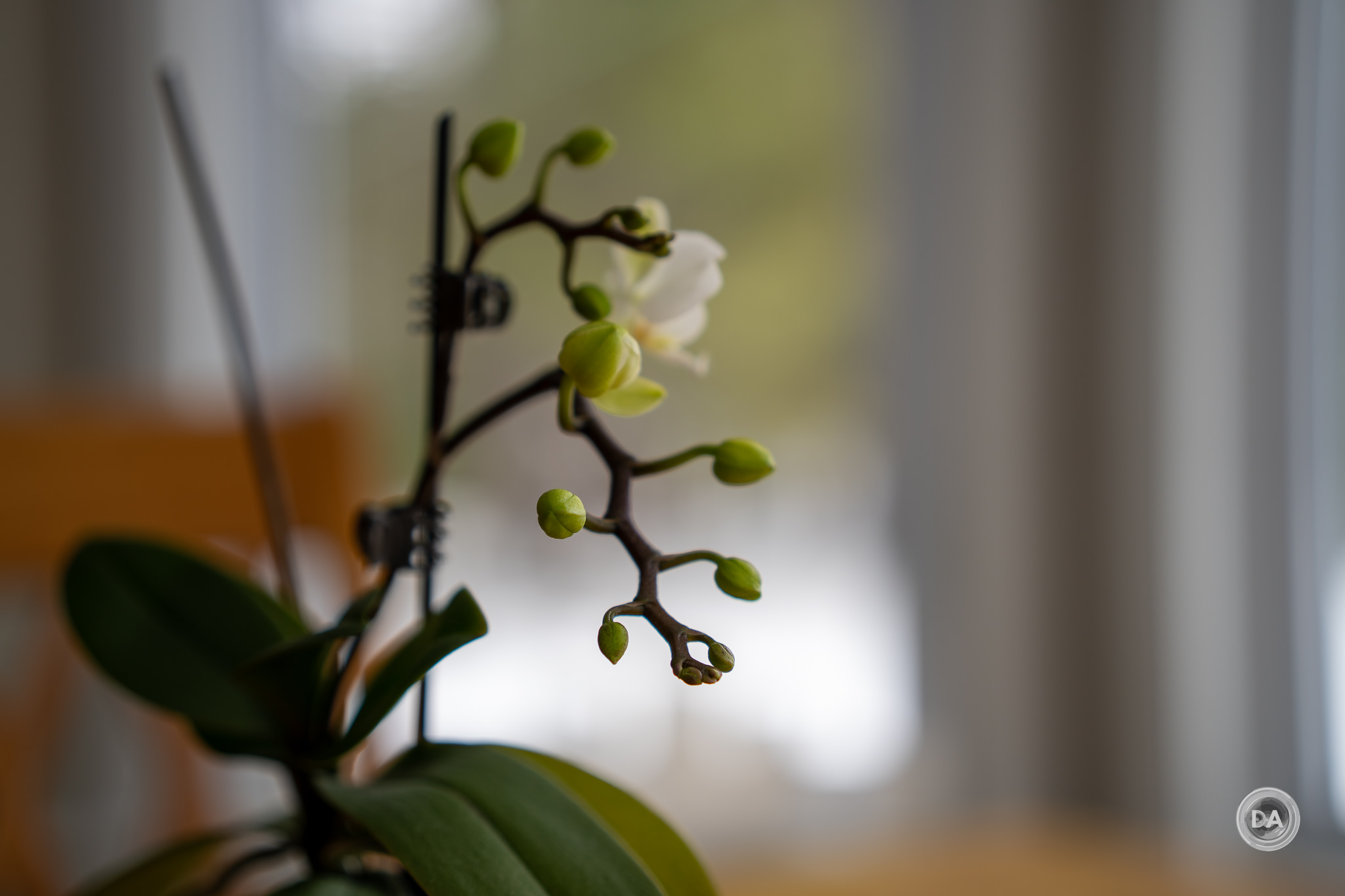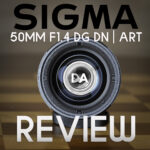Over the past three years Sigma has easily been the most prolific lens developer on Sony FE and Leica L. We went from no full frame options from Sigma on Sony’s mirrorless platform three years ago to 30+ lenses today. And, while I tend to look at these lenses from a Sony slant (I don’t cover Leica L-mount), I do recognize that often these iSeries lenses (a lineup of compact prime lenses that debuted in late 2019) are designed even more with Leica cameras in mind. Compact lenses are even more desirable on compact cameras, and while Sony does have the compact a7C full frame camera, there are a variety of L-mount supporting compact cameras, including some from Sigma itself. The newest lens to join the growing ranks of the compact iSeries lenses is the Sigma 50mm F2 DG DN, which we will refer to as the i50 for brevity in this review, with a 17mm F4 lens also being announced at the same time. If you’re interested in other focal lengths, here is the growing list of iSeries compact prime lenses all hyperlinked to my review of them.
- Sigma 17mm F4
- Sigma 20mm F2
- Sigma 24mm F3.5
- Sigma 24mm F2
- Sigma 35mm F2
- Sigma 45mm F2.8
- Sigma 50mm F2
- Sigma 65mm F2
- Sigma 90mm F2.8
I’ve noted that Sigma’s marketing language for the iSeries is typical marketing word salad (impressive words without much grounding in reality), but the premise for the series is sound. Sigma has recognized that there are multiple segments within the mirrorless market, and those segments have different priorities. One group wants maximum performance in aperture and optics, and these are served by Sigma’s larger ART series (like the recent 50mm F1.4 DN ART), but there is a secondary market who bought into the mirrorless vision of smaller and lighter while retaining the performance. This second group is the target audience for the iSeries. The iSeries lenses are beautiful crafted, very tactile, but are also much smaller and lighter than other premium lenses. I’m a fan of the premise, myself, and have liked most of the iSeries lenses quite a bit.
I recently released my review of Sony’s newest 50mm lens, the 50mm F1.4 G Master, and one of the comments I heard often from my audience was that many of them were less interested in an F1.4 lens (when Sony already has an amazing 50mm F1.2 lens), and what they really wanted was a better quality 50mm F1.8 lens (perhaps in the G series). Sony already has a very compact 50mm F2.5 G lens (which I reviewed here), but people wanted something a little faster than that. Sigma is happy to jump into that void, as the i50 has the superior build quality, quality optics, and compact size that people said they are looking for.
The main threat to the i50 on the Sony side is that Sony 50mm F2.5 G lens, as the Sony is a really solid little lens with a great build, excellent autofocus, good up close performance, and very strong optics. It’s also 25mm shorter and about half the weight of the new Sigma lens…and the price point is pretty much identical. The main Sigma advantage is that it sports a 2/3rds stop brighter aperture (F2 vs F2.5), and it could be argued that the build is even nicer. There are fewer alternatives in L mount, however, where this lens will be even more welcome.
So should the new Sigma jump onto your wish list for a new 50mm lens? I’ll explore the strengths and weaknesses of the lens in this review. So now you have a choice: watch the video review below or read on to get the full picture.
Follow Me @ YouTube | Patreon | Instagram | Facebook | DA Merchandise | Flickr | 500px
Thanks to Gentec (Sigma’s Canadian Distributor) for sending me a pre-release review loaner of this lens. As always, this is a completely independent review. *The tests and most of the photos that I share as a part of my review cycle have been done with the Sony a7IV along with the Sony Alpha 1 which will serve as my benchmark camera for the foreseeable future (my review here).
Sigma i50 Build and Handling
I’ve been a fan of the iSeries design philosophy. I love the all-metal construction, attention to detail, and beautiful handling. Sigma has very intentionally crafted another lens that is both aesthetically and functionally pleasing. As noted, this is another nicely compact lens, with a 70mm (2.8″) diameter and a 58mm front filter thread (in metal). The lens is 70mm (2.8″) in length and weighs 345g (12.2 oz). Here’s a look at how it fits in between a “plastic fantastic” (Canon RF 50mm F1.8) and the smallest 50mm F1.4 lens on the Sony platform – the Samyang AF 50mm F1.4 II. You can see that the lens is definitely the “medium” option of the three.
Sigma released an excellent 50mm F1.4 DN ART lens about six weeks before this 50mm F2, and the two lenses really give you a significant choice in terms of lens size. The i50 is 37% shorter (about 40mm) and weighs nearly 50% less (235g). That clear separation in size was (for many) what some of my audience was looking for from Sony. Here’s a visual comparison between the two lenses (the chart from Sigma, but the image of the i5o is supplied by me into the scale that Sigma provided).
A quick word on filter size. Thus far the series has utilized three different standards for filter sizes, including 55mm, 58mm, and 62mm. The 58mm filter dimensions of this lens is shared only with the 35mm F2, so I’m left wondering if Sigma might not have been better off to adopt a common standard throughout this series. The range of filter sizes only differs by 7mm, so it seems like they could have engineered for a common filter size fairly easily. It’s also a reasonable debate as to whether it is better to have a common filter standard (at the cost of some lenses being bigger than what they would otherwise need to be) or better to let each lens follow its own most logical design path at the cost of varying filter sizes. Clearly Sigma has chosen the latter route.
Sigma has chosen to position the i-Series lenses under the Global Vision division of “Contemporary”. Typically the lenses branded Contemporary carry Sigma’s lowest level of build, with Sport lenses given the most robust build while Art lenses land in the middle. The build of the i-Series, however, is arguably nicer than that of the ART series, and cosmetically every bit as nice as the Sport lenses (though the Sport lenses receive a much higher degree of weather sealing). The positioning of the iSeries lenses into the Contemporary lineup may have more to do with optical design, however, as I’ve had internal discussions with Sigma employees and it seems the idea is that ART lenses should be well-corrected optically without needing a lot of software or profile corrections while Contemporary lenses may require some electronic correction to achieve optimal performance. Frankly I have not found that to be a hard and fast rule, however. Some ART series lenses still need a fair bit of correction and some Contemporary lenses need little, so I think it comes down to the unique engineering of each lens.
In many ways these i-Series lenses remind me of two things: 1) classic lenses like the SMC Takumar lenses (which I own about 5 of), and part of why I love them is their beautiful timeless construction that is all metal and glass – and – 2) cine lenses where the aperture and focus rings are raised rather than flush with the barrel and have wider, deeper ribs that accommodate gearing (something that cinematographers often do but stills photographers almost never do). We’ve got a similar design element in the i-Series.
The Sigma i50 is made all of metal alloys, up to and including the lens hood. The lens hood itself is a beautifully crafted piece with a great tactile feel to the metal and ribbing, and it has an added practical value that there is plenty of grip friction due to the ribbing that makes it easy to remove. The lens hood itself is fairly deep. I appreciate that the hood doesn’t looked “tacked on”, however, and to me the lens looks completed with the lens hood in place because the design language of the lens carries on into the lens hood. There’s a nice “flow” to the design.
Sigma has adopted the inclusion of an aperture ring on many of their DN series lenses (DN indicates that the lenses is designed specifically for mirrorless, while DG designates that the lens is designed for full frame cameras). It works just like Sony G Master lenses where one has the option of selecting A (Automatic) and controlling aperture from within the camera like most lenses, but then one can also manually select aperture in one-third stop detents. There is a nice extra bit of friction between the A position and the manual section which will help avoid any inadvertent bumping between the two choices. The aperture ring (like everything on the lens) is beautifully engineered, and has very precise, definite movement and feel for each of the detents. Some people question the necessity of an aperture ring (particularly one that cannot be declicked for video aperture racking), but I can say for myself that I personally strongly prefer to have an aperture ring even for stills. I find it helps me to be more intentional about the use of aperture and plan in advance for what aperture will best suit my shot.
Another solid addition is the AF/MF switch on the side of the barrel. This is something that many mirrorless lenses lack, but I still find an actual physical switch the quickest and easiest way to move between autofocus and manual focus. The F2 lenses like this one have the AF/MF switch mounted transversely, which fits better in the space allotted on these compact lenses. A subtle positive touch here is that the paint exposed when in AF is white, while the exposed paint when in MF mode is black. It’s a quick visual clue. Sigma’s ART series DN lenses include a focus hold button as well, but that’s not a feature we’ve seen on the iSeries lenses.
There is also a manual focus ring. The focus ring, like the aperture ring, is a “by-wire” system, meaning that input on either the focus ring or the aperture ring is electronically communicated rather than through a direct mechanical coupling. This means that input on the focus ring or the aperture ring will not create any physical changes unless the lens is attached to a camera and powered on. The focus ring has a nice feel to it, and Sigma has done a good job emulating traditional manual focus. It is worth noting that Sigma has released a firmware update for its L-mount lenses that enables the user to have control over whether the focus ring operates in a linear or non-linear fashion.
Like most of the iSeries lenses, Sigma is leveraging the all-metal construction to give consumers an option when it comes to the front lens cap. There is a traditional pinch-style plastic lens cap included, but the lens also ships with a magnetic cap that pops easily into place. I find that it works better if you are using the lens without the hood, as reaching in to remove it with the hood fixed is quite difficult. I’ll confess that for me, personally, the magnetic caps have proved more gimmick than revolutionary, and I just use the traditional pinch cap. Your mileage may vary, of course. I know that some people love the magnetic caps.
The lens does have a weather sealing gasket, though there are no other internal seals in the lens. There is no image stabilization (though almost no prime lenses do, so I don’t exactly look for it). You’ll have to rely on IBIS if your camera is so equipped.
The aperture iris has nine rounded aperture blades, and this helps keep the aperture shape fairly circular when stopped down. There is some “cat-eye” shape near the edges of the frame, though a stop down to F2.8 produces round specular highlights across the frame. I’ll throw in the F4 result for good measure.
Minimum focus distance here is 45cm or 17.8″, which is pretty standard fare for a 50mm lens. That limits the amount of magnification to a ratio of 1:6.9, or 0.14x. The Sony 50mm F2.5 G can focus as closely as 31cm and gives a more robust 0.21x. Here’s what MFD from the Sigma looks like:
Magnification isn’t particularly high, but the up close results are pretty good. Contrast is strong and the plane of focus is surprisingly pretty flat.
Still, the amount of magnification here is slightly below average for a 50mm lens, so that if that is a priority for you, the Sony 50mm F2.5G might be a better option.
That minor misstep aside, I remain a fan of the iSeries design formula, and the i50 is no exception. It feels beautiful in the hands, and both the aperture and manual focus rings move nicely. I really value compact lenses that are also well-made and high performing, as they tend to be the lenses that I reach for most often for practical reasons.
Sigma 50mm F2 DN Autofocus
Sigma has unveiled a new focus system (HLA) on their bigger lenses that has helped speed up autofocus in those lenses with bigger, heavier elements, but they are sticking with their tried and true formula on the iSeries lenses. These smaller, lighter elements on the iSeries lenses don’t really need the higher power of the HLM focus motor, so Sigma continues to utilize a stepping focus motor (STM) that makes fast, quiet focus changes. I have no problem with this decision, as focus is snappy and quiet. The Sony 50mm F2.5 G employs dual linear motors, though frankly I’m not sure many people would be able to detect a difference in focus speed between the two lenses Even large focus changes on the i50 are near instantaneous and without pulsing or settling. Focus accuracy is also very good.
I found that Eye AF worked well whether tracking a human subject:
…or animal subject.
The tracking remained sticky on the eye on either my Sony Alpha 1 or a7IV. I also had good focus accuracy with inanimate subjects as well:
When I did my “Nala tracking” test where I try to track her moving towards the camera, I got a mixed bag result. The first part of the sequence was backfocused, though once focus swung forward to the right spot it did stay there until the end. Not quite as effective as either the recent ART lens or the Sony 50mm F1.4 GM that I recently tested.
During my focus pull test I heard no focus noise despite working in a near silent environment. I also saw a good result when doing my hand test (where I block the lens from viewing my face and then remove it to see how confidently focus returns to the eye), though I will note that there was a mildly visible step in the focus transition there (focus seems to very briefly pause about halfway through the focus pull from my hand to my face). I saw a smoother result during a test where I walked up towards the camera, as that was a longer, slower focus adjustment and I saw no visible steps there.
The stepping was exaggerated in one of those tests by some obvious focus breathing , which leads me to a side discussion for potential Sony E-mount. Sony has a few areas related to focus where they put a thumb on the scale to give some advantage to Sony lenses. One of those is that Sony has a focus breathing compensation/correction in some Sony cameras that (at the cost of a minor crop) can largely eliminate focus breathing. But you’ve probably guessed what is coming: this correction is only available for first party Sony lenses. I’ve also noted that while the focus of the i50 is nice and snappy, the burst rate on Sony’s sports cameras will be limited to 15FPS rather then the potential 20/30FPS that Sony’s sports bodies can achieve with a Sony lens.
For many people neither of these things will be a major issue. The burst rate only affects either those that own an a9/a9II or an Alpha 1 camera at the moment, and it’s not like 15FPS is slow! It’s also worth noting that none of these restrictions will apply to L mount customers, as Sigma is part of the L mount “cooperative”, and so this is (technically) a first party lens there.
In short, the focus system is excellent, and most of the limitations are those artificially imposed by Sony. Those for whom video is a priority might want to consider the Sony 50mm F2.5 G for two reasons, however. The first is that the Sony does allow for declicking the aperture (a video-centric feature) and also that the Sony lens will be compatible with the focus breathing compensation if that happens to be a concern. Those that want to use their 50mm to track high speed action might want to go with the one of the bigger, more expensive 50mm F1.4 options from either Sigma or Sony, as these seem to be a little more robust for tracking action. The Sony would be the best choice as it will also deliver the maximum frame rate on sports cameras. For most people in most situations, however, the Sigma 50mm F2 DN will serve their autofocus needs very well.
Sigma i50 Image Quality Breakdown
Sigma has done a pretty remarkable job as a third party lensmaker in that people expect a new Sigma release to automatically be a very high performing lens optically. That’s certainly true here, as this smaller lens is actually very competitive with the high end Sigma 50mm F1.4 DN ART that was just released. According the respective MTF charts, the 50mm F2 is actually about 10% sharper in the center of the frame, is a hair sharper in the midframe, but is considerably weaker (roughly 20%) in the corners. Here’s a Sigma-provided comparison chart (50mm F2 on the right):
So, for most of the area that matters in many types of photography, the i50 is going to be a very strong performer…and that’s what I find in real world results:
We’ll break down what I actually found in a mix of real world and chart tests.
There is some longitudinal chromatic aberrations (LoCA) visible at a pixel level, but nothing extreme. You’ll likely mostly see it as a bit of green fringing on bokeh highlights.
I saw little evidence of lateral chromatic aberrations (LaCA) along the edge of the frame in either my chart tests or any real world images:
Sigma lenses enjoy good profile corrections on either Sony or Leica platforms, but we’ll look past the corrections to the optics of the lens itself. Here’s a look at my vignette and distortion chart, with the uncorrected result on the left and a manually corrected result on the right.
There’s a very minor amount of barrel distortion (corrected with a +1) and a moderate amount of vignette (I corrected it with a +51). That’s about two stops of vignette in the corners, though if left uncorrected that vignette does penetrate quite deeply into the frame, giving images a certain look that is a little “heavy”. You can see that the if I use Sigma’s correction profile (on the right), the image looks much brighter as a result.
The correction profile does a nice, clean job of cleaning up the tiny bit of distortion and the vignette, so I don’t see any issues there.
We’ll move on to testing sharpness. All of the tests and photos shown in this review are done on the 50MP Sony Alpha 1, which is Sony’s second-highest resolution full frame mirrorless camera at the time of this review. Here’s a look at the test chart we’re using for the tests.
If we look closely wide open at F2 (crops are at roughly 170%), we find that the lens produces extremely strong center and mid-frame performance with very high contrast and sharpness, and the dropoff to the corners is less than what I expected from the MTF chart.
That’s a nice, strong performance. I went to check how this compared with the 50mm F1.4 DN ART lens, as Sigma had touted the performance of this smaller lens relative to the bigger ART series lens. Here’s where the MTF charts don’t tell the whole story, however, as they are comparing wide open performances (F1.4 vs F2). The apples to apples comparison is at F2, however, and we find there that the by F2 the ART series lens has closed the gap in the center (about equal), the mid-frame slightly favors the ART lens, while the corners are a clear win for the bigger lens.
The two lenses are very close other than in the corners, so that’s a win for the smaller, less expensive iSeries lens. This is an extremely sharp lens that has most of its sharpness available at wide open. You can see that this wide open, F2 shot of our city hall building is already very sharp.
In fact, if I compare the F2 result with an F5.6 result, I can only see a very minor improvement in contrast at F5.6. The F2 shot is nearly as sharp.
In fact, there is little difference between F2 and F2.8, though I see an uptick in contrast at F4 in certain points in the frame.
Resolution seems to peak somewhere between F5.6 and F8 in the corners, though you’ll see slightly sharper center results at wider apertures than that. Sharpness is never going to be an issue with this lens. You can see in this quick, casual portrait at F2 that there is tons of sharpness even on a 50MP camera:
Minimum aperture is F22, though by that point diffraction has softened the image quite a bit.
Obviously this is a very sharp optic. While it is considerably more expensive than the typical “plastic fantastic” (50mm F1.8), it is also in a much higher class optically. This lens is much like the Zeiss Loxia series – a reminder that small doesn’t necessarily mean “cheap” in either price or performance.
Bokeh is a subjective measure, obviously, but it here that the F2 lens faces its biggest challenge relative to the F1.4 big brother. Depth of field is just much smaller at F1.4, meaning the the backgrounds will be more blurred/softer. The slightly lower maximum magnification figure of the iSeries lens will also limit how much you can blur out the background. The quality of the bokeh looks fairly decent when compared to the ART series lens, however:
This orchid shots shows good subject isolation and a nicely blurred background at closer focus distances.
If I step back a foot or two in this shot of a fancy purse you can see that the room beyond it is fairly nicely blurred, though perhaps with a little more outlining than what I would like. That’s not unusual for a lens that has such high contrast and a relatively small maximum aperture.
My son and his fiancée helped me with this next test that shows first foreground, then background blur. For good measure I’ve also demonstrated how he looked with the maximum defocus the lens could produce at this distance.
Bottom line: I wouldn’t call the bokeh quality anything amazing or magical here, but at the same time it looks fairly good, too. I think that most photographers will be content with the quality of the bokeh they get from the lens.
I found flare resistance to be exceptionally good, with no noticeable veiling or ghosting. There’s no blobs of color, loss of contrast, etc… The final shot shows the look of the sunstar you can get at smaller apertures:
I saw a night with a decently clear sky and good star presence, so I grabbed a few shots to test coma. I found that star points were nice and crisp, and, while I can see a bit of deformation and growing of “wings” along the edges of the frame, this is a pretty good performance overall.
In short, there really isn’t a lot to complain about optically here. Colors and contrast were rich, and images had good “bite” to them, particularly if you are looking for sharp, high contrast images.
You can check out even more photos by visiting the lens image gallery here. This is a very strong lens optically and one that has few flaws. It’s a solid choice if you want something smaller and lighter yet high performing.
Conclusion
I was intrigued that Sigma seems to have read the market’s mind, as my Sigma contact let me know about the incoming Sigma 50mm F2 DN C roughly at the same time that many in my audience were wishing for a high performing compact 50mm lens somewhere around F1.8. This is pretty much the lens they requested, with a high grade of build, good autofocus, and excellent optics. Here’s hoping that the market is as receptive to the i50 as those early comments seem to suggest.
The iSeries always delights me with the tactile feedback of the designs. They feel exquisitely well made, with unique textures and design language that speaks of a company that really does love to produce beautiful lenses. This 50mm F2 backs up those good looks with nice optics as well.
As is often the case with iSeries lenses, the final question is one of value. These lenses face a bit of a perception battle, as they are very often priced higher than competing lenses with similar specs on paper. In this case, the Sony 50mm F2.5 G must be considered, as while the Sigma enjoys a 2/3rds stop brighter maximum aperture, the Sony is smaller, lighter, cheaper ($598 vs $639 USD) while also having a few other advantages (dual linear motors, maximum magnification, focus hold button and delickable aperture). There are just so many options on Sony at this point, including the Sigma 50mm F1.4 DN at just $200 more. The Leica L market is much more sparse, however, and the Sigma presents as more of a bargain in that space. There’s no question that the Sigma 50mm F2 DN is a very nice little lens that should check a lot of boxes for the right potential owner.
Pros:
- Beautifully crafted lens with a lot of loving touches
- Has a weather sealing gasket
- STM focus motor is quick and quiet
- CA fairly well controlled
- Excellent wide open sharpness
- Nice bokeh rendering
- Good color and contrast
- Good flare resistance
- Fairly good coma performance
Cons:
- Some obvious focus breathing
- More expensive than Sony competition
- Maximum magnification isn’t impressive
Purchase the Sigma 50mm F2 DN @ B&H Photo | Adorama | Amazon | Camera Canada | Amazon Canada | Amazon UK | Amazon Germany
Purchase the Sony FE 50mm F2.5 G @ B&H Photo | Adorama | Amazon | Camera Canada | Sony Canada | Amazon Canada | Amazon UK | Amazon Germany
Purchase the Sigma 50mm F1.4 DN ART @ B&H Photo | Adorama | Amazon | Camera Canada | Amazon Canada | Amazon UK | Used at KEH | eBay
Purchase the Sony a7IV @ B&H Photo | Amazon | Camera Canada | Amazon Canada | Amazon UK | Amazon Germany
Purchase the Sony Alpha 1 @ Camera Canada | B&H Photo | Amazon | Amazon Canada | Amazon UK | Amazon Germany | Ebay
Purchase a Sony a9M2 @ B&H Photo | Amazon | Camera Canada | Amazon Canada | Amazon UK | Amazon Germany | Ebay
Want to support this channel? Use these affiliate links to shop at: B&H Photo | Amazon | | Camera Canada | Ebay | Make a donation via Paypal
Buy DA Merchandise https://bit.ly/TWIMerch
Peak Design Leash Strap: Peak Design Store | B&H Photo | Amazon | Amazon Canada | Amazon UK
Adobe Photoshop Creative Cloud 1-Year Subscription
Get a discount off all Skylum Editing Software (Luminar, Aurora HDR, AirMagic) by using code DUSTINHDR at checkout:
Visit Dustin’s Amazon Storefront and see his favorite gear
Purchasing your gear through B&H and these links helps fund this website and keeps the articles coming. You can also make a donation here if you would like. Visit my Amazon page for some of my gear of choice! Thank you for your support.
Purchasing your gear through B&H and these links helps fund this website and keeps the articles coming. You can also make a donation here if you would like. Visit my Amazon page for some of my gear of choice! Thank you for your support.
Receive a 5% discount on all purchases at Amplis Foto, Canada’s Leading Photographic Supplier. Please enter discount code: AMPLIS52018DA in your cart. It is good for everything in your cart, and is stackable with other coupons, too! It will take 5% off your entire order! Proceeds go towards keeping this site going and providing you with new reviews!
Use Code “DUSTINHDR” to get $10 off ($15 CDN) any Skylum product: Luminar, Aurora, or AirMagic
Keywords: Sigma 50mm F2 DN, Sigma 50 2, Sigma 50mm 2 DN, Sigma 50mm, Sigma 50mm F2 DG DN, DG, DN, iSeries, Contemporary, 50mm, F2, f/2, Review, Sony 50mm GM, Sony 50mm F1.2 GM, Samyang AF 50mm F1.4 II, Leica L, Sony E, Review, Telephoto, Action, Tracking, Hands On, Dustin Abbott, Real World, Comparison, Sharpness, Bokeh, Flare Resistance, Autofocus, Image Quality, Sample Images, Video, Photography, Sony a9, sony a7III, sony a7RIV, a9II, Sony Alpha 1, Sony A1 let the light in, #letthelightin, DA, #SIGMA, #SIGMA50mmF2Contemporary, #SIGMAContemporary, #SIGMAContemporaryPrime, #SIGMADGDN, #Iseries, #SIGMAIseries


